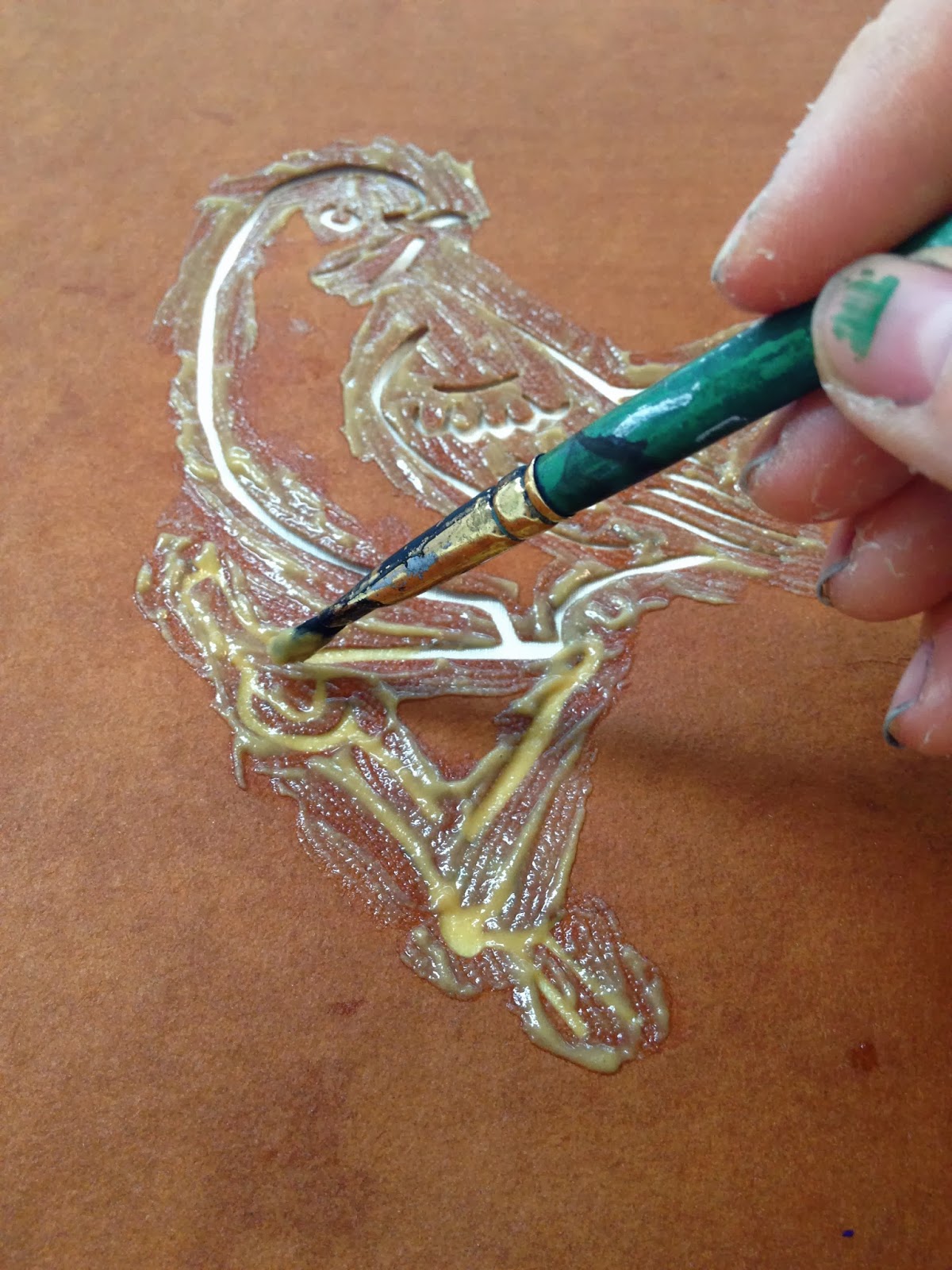So, in the meantime, here's another of the projects that I've been working on: my natural dye paintings. Basically, these are paintings done with natural dyes on silk that feature a stencilled rice paste resist. I'm doing three paintings, each with a different kind of bird for the stencil design.
First, I traced my design onto smoked mulberry paper, (which is what will be used for the actual stencil) and then cut it out.
Then, using the stencil, I applied the rice paste to the silk. For the hummingbird and the seagulls, I was able to push the rice paste through the stencil in a similar way to how you'd screen print something:
But that technique wasn't really working out for the mockingbird, so I ended up painting the rice paste on:
So here's the silk after the rice paste had been applied:
After the rice paste dried, I could begin painting. The rice paste acts as a resist and is rinsed out when the painting is finished, meaning that any parts of the silk covered by the paste during the painting process will be white when it's all finished. The paints themselves are natural dye pigments that are mixed with soy milk (the soy milk helps to bind the pigments to the cloth).
The picture below shows all my stuff set up for painting. The silk has to be suspended on frames during the painting so that the dye paints can't run onto to another part of the cloth like it would if it was sitting on the table.
And here are all my paints set out:
The mordants that I'm using for the dyes can really seep into and stick to the paintbrush bristles, so to make sure that my colours are not affected by any cross-contamination, they all get their own brush. Which is labelled with the mordant that that brush is designated for.
To achieve the best colours, the dye has to be built up over numerous layers. I aim to get five or six layers on my paintings. Once all the layers are on, and dried, the paintings have to sit for a few months before the rice paste can be rinsed out. Because the dye isn't being heated to set it, it has to be set with time. I'm planning to rinse mine near the end of May, just before my graduate exhibition is set up, which is as much time as I have to give them!











No comments:
Post a Comment